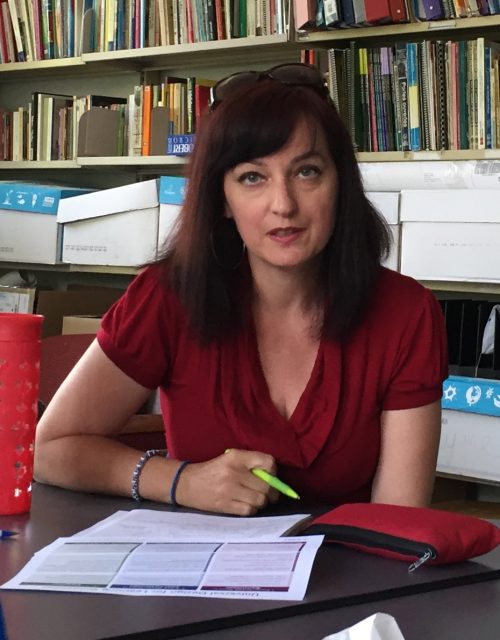Rebecca Million’s Portfolio
Reflection Paper on the Intersection of UDL with Active Learning, Critical Humanistic Pedagogy, and Creativity in the Classroom
Drawn from the Implementation of UDL in the course 603-103-MQ, The Lord of the Rings
By Instructor Rebecca Million
 In this brief report I will be drawing on my experiences and reflections (recorded in a “UDL Journal”) throughout the UDL implementation phase of fall 2016. While working to implement some practical changes in my course, I became keenly aware that all the kinds of pedagogy that I have been learning about, in various faculty learning groups and in the New School, overlap with UDL in theory and practice, as well as in the way they affect my relationship with my students and their learning experience in my classes. I will try here to articulate some of the ways I’ve seen this overlap manifest itself.
In this brief report I will be drawing on my experiences and reflections (recorded in a “UDL Journal”) throughout the UDL implementation phase of fall 2016. While working to implement some practical changes in my course, I became keenly aware that all the kinds of pedagogy that I have been learning about, in various faculty learning groups and in the New School, overlap with UDL in theory and practice, as well as in the way they affect my relationship with my students and their learning experience in my classes. I will try here to articulate some of the ways I’ve seen this overlap manifest itself.
In practice: The guidelines of UDL ask us to provide multiple means of engagement, representation, and action/expression. Active Learning demands much the same of us as teachers.
- In an Active Learning Classroom we provide an environment where students are asked to engage with their peers, work on ideas/problems in teams, and articulate their findings and solutions in various forms, oral and written (even drawn, acted out, etc.). While engaged in active learning activities, students move out of their chairs and around the classroom, writing on white boards, using the computer and SMART board, discussing in groups and at times thinking and writing individually.[i]
- The Critical Humanistic pedagogy we try to practice in Dawson’s New School is also a natural fit in a UDL class, where teachers allow students to bring their prior knowledge and personal experience to their reading, discussion, and writing about a given text or critical framework. This place for the “whole person” in the learning process allows all students a way to access the work, regardless of background and neurological “profile”, and it provides the best kind of engagement, both with the readings and with the social group(s) within the classroom.
- The use of creative assignments also has an obvious consonance with UDL, as students can express their understanding of course material in a variety of ways — ways that are chosen by them. The use of creative expression to engage with course material ultimately validates each student’s unique strengths and abilities[ii]. Creative assignments demand that students make deep and broad connections between course material and the world around them, as well as with their other courses. In my work in this vein, I have seen creativity unlock a deep and meaningful understanding in students, even (and maybe especially) in those who’ve had trouble with reading and writing and felt disconnected from their English courses.
In relationships:
- In a less tangible way, implementing UDL can improve students’ learning experience through the relationships it encourages between instructor and students, and between the students as learners and peers.
- In trying to create a classroom where barriers are lowered for all students, the instructor must be an active listener, and be attuned to the needs and abilities of all and each. This obliges us to approach students as people, with a generosity of intent that creates a space for trust and openness, and suggests that students of all types and abilities have something to offer the class as a whole. This feeling of trust and validation can also spread among the students, creating a dynamic where variety and diversity are valued as means to an enhanced student experience, both social and academic.

Read more:
Rebecca Million: UDL Implementation
R. Million-UDL Implementation, F2016-version PDF
[i] In an English class, we very often use the “flipped” class format, where students do the reading and thinking about questions before coming to class, and then work to deepen their understanding through classroom activities and discussion. This often makes the use of Active Learning strategies very rewarding, when I find ones that work!
[ii] This applies even to students who don’t think of themselves as “creative.” I work closely with them to find a way to express themselves that draws on their own interests and abilities, and they see that creativity isn’t restricted to those with artistic inclinations.



